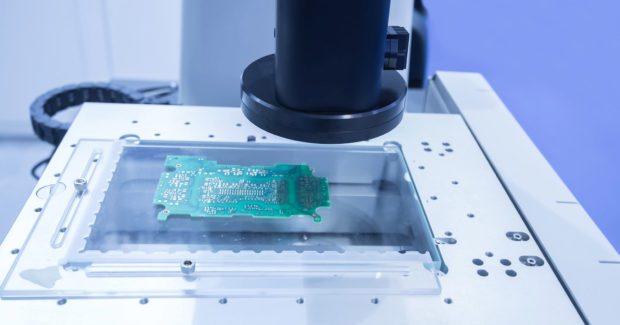Seeing the Way to the Factory of the Future
Why machine vision is a crucial technology for Industry 4.0.
Posted: June 19, 2017
Around 540 million years ago there was a rapid burst of evolution known as the Cambrian Explosion. One hypothesis for this is that the evolution of vision started an arms race. Complex vision improved the ability of animals to navigate and identify objects; it is now regarded as the most important sense. In industry, machine vision is being incorporated to develop industrial processes further, identify areas of improvement and enable intelligent locomotion within robotics.
Machine vision is an image processing technology that enables automated object scanning within a set field of view. Plant operators can mount cameras on production lines or cells for real-time process control, product inspection and sorting and robot guidance. The technology enables robots to interpret their visual surroundings, which can allow them to move around independently. Visual information can be used to recognize the environment and make decisions which are not directly programmed.
MAKING CONCLUSIONS
A camera does not see in the same way as the human eye, but machine vision systems use pattern detection software to examine data and draw conclusions based on prior knowledge. This technique is particularly useful when inspecting the quality of raw materials and final products for component flaws or defects. For example, if a problem is found, a part can be redirected or the process can be corrected to resolve the issue. As well as flaw detection, machine vision can be used to ensure operations are traceable using identification tags. A camera can read the tags, allowing the information to be used to direct the product or to register which parts are at what stage of the supply chain.
Smart cameras and sensors can digitalize and transfer information, decoding what they capture and removing the need for human interpretation. The machine can then decide whether the information needs communicating to a central control system. These are low cost, easy to use systems that are often a good option for those looking to streamline automated manufacturing.
SMARTER FACTORIES
Machine vision is central to the idea of the smart factory, which is based upon a self-organized system comprising of a communicating network and an intelligent exchange of information. Acting as the eyes of the factory, image processing systems based on industrial cameras can compute information that was previously done by manual testing. This reduces human error and enables robots to react flexibly to information for production control. Because image processing equipment captures, gathers and exchanges data, it is a key technology for interconnected production processes. This data can be transmitted to the value chain, but also used to trigger intelligent actions.
The technology can be used to examine the state of production machines for wear and tear. This information is useful for maintenance and can alert a plant manager of the need to order a replacement industrial component before it breaks. With machine vision systems decreasing in size and increasing speed, accuracy and resolution, the popularity of these systems could grow drastically over the next few years, similar to the Cambrian Explosion.
















